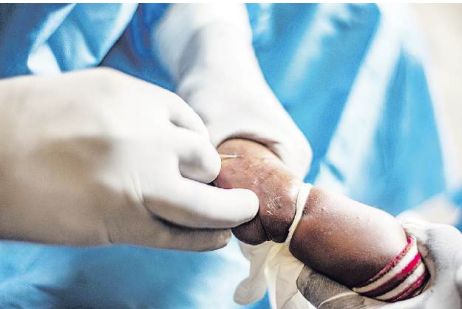

Kenya now has access to more tools to test mpox, which has so far killed one Kenyan.
This is after the World Health Organisation listed two additional mpox in vitro diagnostic tools under its Emergency Use Listing procedure.
Kenya has confirmed 13 cases of mpox, and its first death from the disease.
The cases are spread across Nakuru (two), Kajiado (two), Bungoma (two), Taita Taveta (one), Busia (one), Nairobi (one), Mombasa (one), Makueni (one) and Kericho (one).
WHO listed the Xpert mpox, a real-time PCR test manufactured by Cepheid under its EUL procedure, on 25 October.
This test is designed for use on compatible GeneXpert systems.
The Xpert mpox test is easy to perform and delivers results in under 40 minutes.
Once the cartridge is placed in the system, the process is fully automated, with real-time PCR detecting viral DNA of monkeypox virus clade II.
The GeneXpert system is a near-point-of-care testing option, which can support decentralised testing.
Another PCR-based option, the cobas MPXV assay, developed by Roche Molecular Systems, Inc., was listed on 14 October.
It is intended for use on the cobas 6800/8800 Systems.
This tool is a real-time PCR test capable of detecting mpox clades and delivering results in two hours.
It can process multiple samples simultaneously and is suitable for clinical laboratories that handle large volumes of tests.
“Ensuring global access to mpox diagnostic tests that meet WHO standards for quality, safety and performance is essential for efficient and effective testing in settings affected by mpox outbreaks,” Dr Rogerio Gaspar, WHO director for regulation and pre qualification, said.
“Rapid access to those listed products is critical not only for prompt diagnosis and timely treatment but also for effectively containing the spread of the virus.”
WHO previously listed Alinity m MPXV assay, manufactured by Abbott Molecular Inc. under EUL on October 3.
This year, 18 countries reported more than 40,000 suspected mpox cases with most remaining unconfirmed due to limited testing capacity, especially in LMICs.
In the Democratic Republic of the Congo — the hardest-hit country — testing has significantly increased, following efforts to decentralise testing with support from WHO and partners.
However, the proportion of tested cases remains low, accounting for 40-50 per cent of the suspected cases.
Overall, WHO said it has received more than 60 expressions of interest for the EUL review of mpox diagnostic tests.
Seven of these progressed to EUL applications, with two products currently under review and 2 more expected soon.
Mpox was declared a public health emergency by the Africa Centre for Disease Control and Prevention On August 14, the World Health Organisation similarly proclaimed the event a public health emergency of international concern.
Two weeks ago, WHO donated medicines for NTDs and Mpox diagnostics to the Ministry of Health.
It donated more than 15 million tablets to support Kenya’s fight against NTDs to help eliminate conditions like Schistosomiasis and Soil-Transmitted Helminthiases.
The donation worth Sh213 million worth of medicine is to be used for a mass drug administration later this month targeting more than 15 million people in 15 counties.
According to the ministry, the focus will be on the Coastal region, Lake Victoria basin and Western regions, where the burden of these diseases remains highest.
They include 7.8 million Mebendazole tablets, 7.2 million Praziquantel tablets, 444,000 Diethylcarbamazine Citrate tablets and
177,000 Albendazole tablets.












